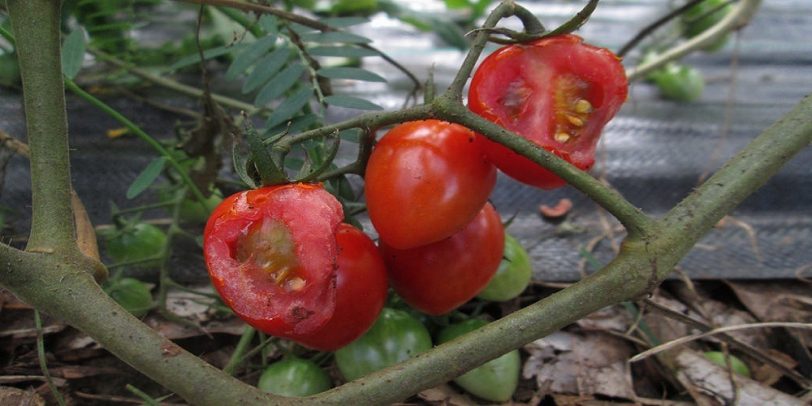How to Identify, Prevent, and Eliminate Garden Tomato Pests
You may be surprised about how many insects take delight in turning your beautiful tomato plants into devastation.
Learn what tomato pests are attacking or infesting your garden and what you can do about it.
Common Tomato Pests
- Chewed stems indicate tomato cutworms.
- Defoliation is associated with tomato and tobacco hornworms.
- Should you find holes in the leaves, flea beetles are to blame.
- Aphids are responsible for yellowed, curled leaves.
- Psyllids produce purple veins on the leaves.
- Leaf miners leave an obvious trail of zig-zag patterns in leaves.
- Holes in the stem are generally contributed to the stalk borer.
- Aphids and whiteflies leave behind a white, sticky residue called honeydew.
- Spider mites leave a webbing on a leaf's underside. These insects are drawn to the leaves and stems.
- Clover mites feed on grasses and clover (no surprise!) but can attack shrubs and ornamentals when their populations surge.
Fruit Pests that Love Tomatoes
Stink bugs and the tomato fruitworm create holes and dark pinpricks in the tomato. Stink bugs also produce light or discolored patches on your fruit. Slugs will also cause holes.
Tomato Pests Prevention and Elimination
- Spray Your Tomato Plants with Water
Use a hose with a high-pressure stream. This will dislodge insects, especially the tinier critters, and encourage them to move on. Be sure to do this for several days in a row to remove the more stubborn-minded tomato pests. - Manual removal
Wearing gloves, you can evict the little critters by hand. Depending on your view and ability to destroy an insect, you can crush them with your foot, or have a bucket of soapy water for their demise, or for the fainter of heart, you can relocate them in a patch of wild vegetation down the road. This solution is more logical for larger garden tomato pests. - Insecticidal Soap Application
Potassium salts in insecticidal soaps are fatty acids that remove an insect’s protective waxes and cause disruption of insect cell membranes. They are effective when applied directly to the insect on the plant. Mix with water to produce a 2-3% dilution. One benefit of using insecticidal soap is that has less lingering effects on other organisms. Insecticidal soaps are organic. A downside is that certain plants may be sensitive to soaps, causing the leaves to burn. Insecticidal soaps are especially effective on smaller pests such as aphids, psyllids, and spider mites. - Horticultural Oil
Plant or petroleum-based oils are mixed with water to attain horticultural sprays. Neem oil, for example, is derived from seed extracts of the neem plant. Oil-based sprays block an insect’s air holes, compromise an insect’s metabolism, disrupt feeding, and hinder insect growth. Like insecticidal soaps, horticultural oils can cause plant injury if not sufficiently diluted. Use caution when utilizing. - Insecticides
If the critters are relentless after you have tried other treatment methods, you may need to resort to insecticides. However, keep in mind that by doing so, you may kill helpful insects. Not all garden tomato pests are bad. Follow product instructions. Treat for 2-4 weeks with a garden sprayer.
Related Articles:
Hire an Early Bird for Garden Pest Control
Spring Pest Control

